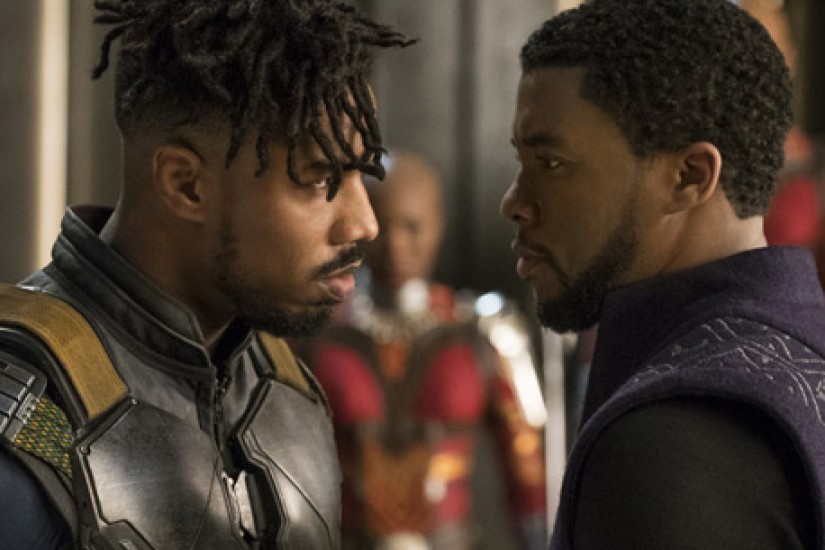How should we understand the arc of the film? How should we read this final pivotal moment? Are these distinctions as clean as they appear? Is Killmonger the villain we are made to hate, and T’Challa the hero we cannot help but love?
For Lebron, the movie sides with T’Challa, reducing the Americanized Wakandan to a “receptacle for tropes of inner-city gangterism.” At a time when black life is under assault, he argues, the movie traffics in infantilizing tropes about black men as angry, irrevocably wounded, and in need of rescuing at the hands of superior Africans. For others, the movie appears to sloppily tie liberation for oppressed people to the efforts of the murdering Killmonger. This second critique should not be quickly dismissed. In the comic books, Killmonger lives in Harlem, but Coogler sets both his birth and his family’s painful story in Oakland, California—the home of the 1960s Black Panther Party. In doing so, Coogler connects the fantasy of Black Panther with the historic Black Power group—a connection that had not otherwise existed. (Marvel’s Black Panther first appeared in print just months before Huey Newton and Bobby Seale founded the BPP, in October 1966.) This seems to conflate the socialist, liberationist vision of the Black Panther Party with the figure of Killmonger.
All such accounts make the film answerable to the sociological view of black life to which Ellison referred, wherein black identity is so often characterized fundamentally by loss, dispossession, and injustice. This weighs the film down and it flattens its internal complexity. We don’t look at the production for itself—we demand that it serve our ideological needs, so much so that it is Oakland as the site of the birth of the Black Panther Party, rather than Oakland as the home of the director, that becomes central to the analysis. When we only interpret the movie on these terms, the measure of its success is that it becomes a political weapon for the oppressed. When it refuses to fit neatly into the liberationist story we impose on it, it can only appear as an accomplice to oppression.
The art, however, must bear its own burden, not ours. When we examine the movie from the inside, what emerges is a very different and rich narrative. Coogler ask us to see Killmonger not as a stereotype of African-American life, but as a commentary on the wider society from which he comes. The movie demands that we resist the temptation to examine Killmonger through the often distorting and unfriendly American gaze. For those eyes, as we learned so long ago from W. E. B. Du Bois, often look on black people in amused contempt and pity.

